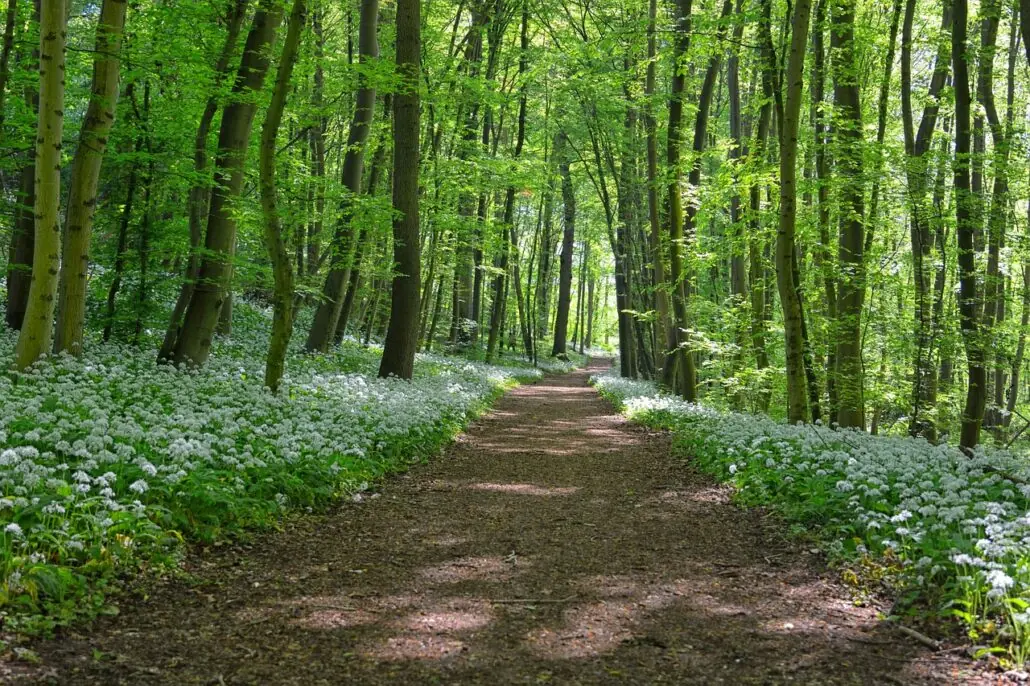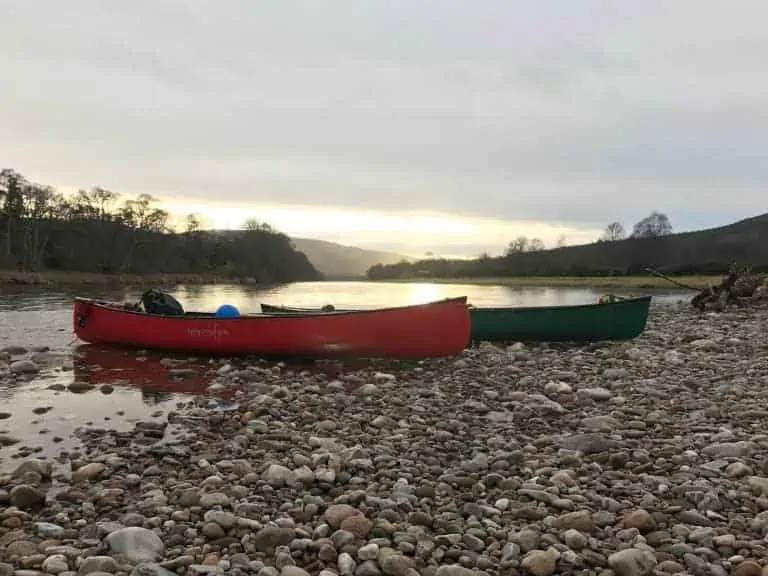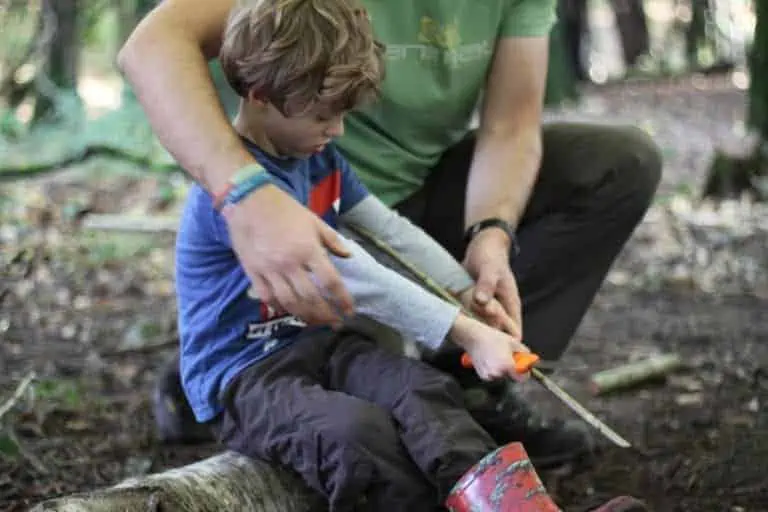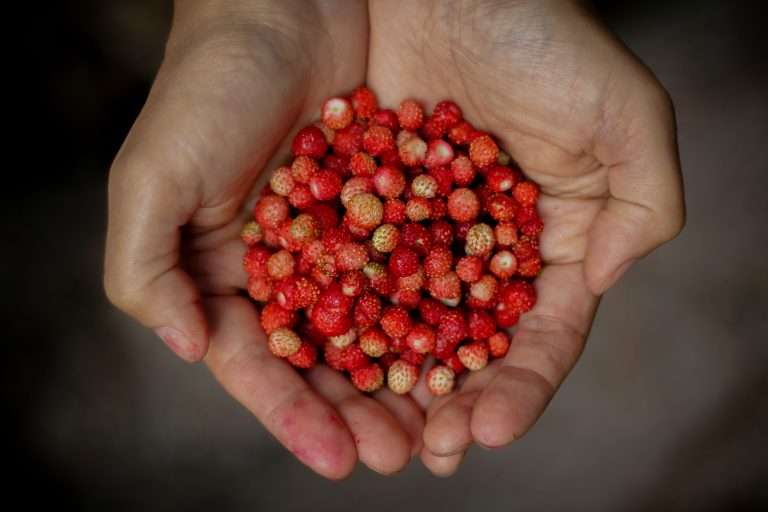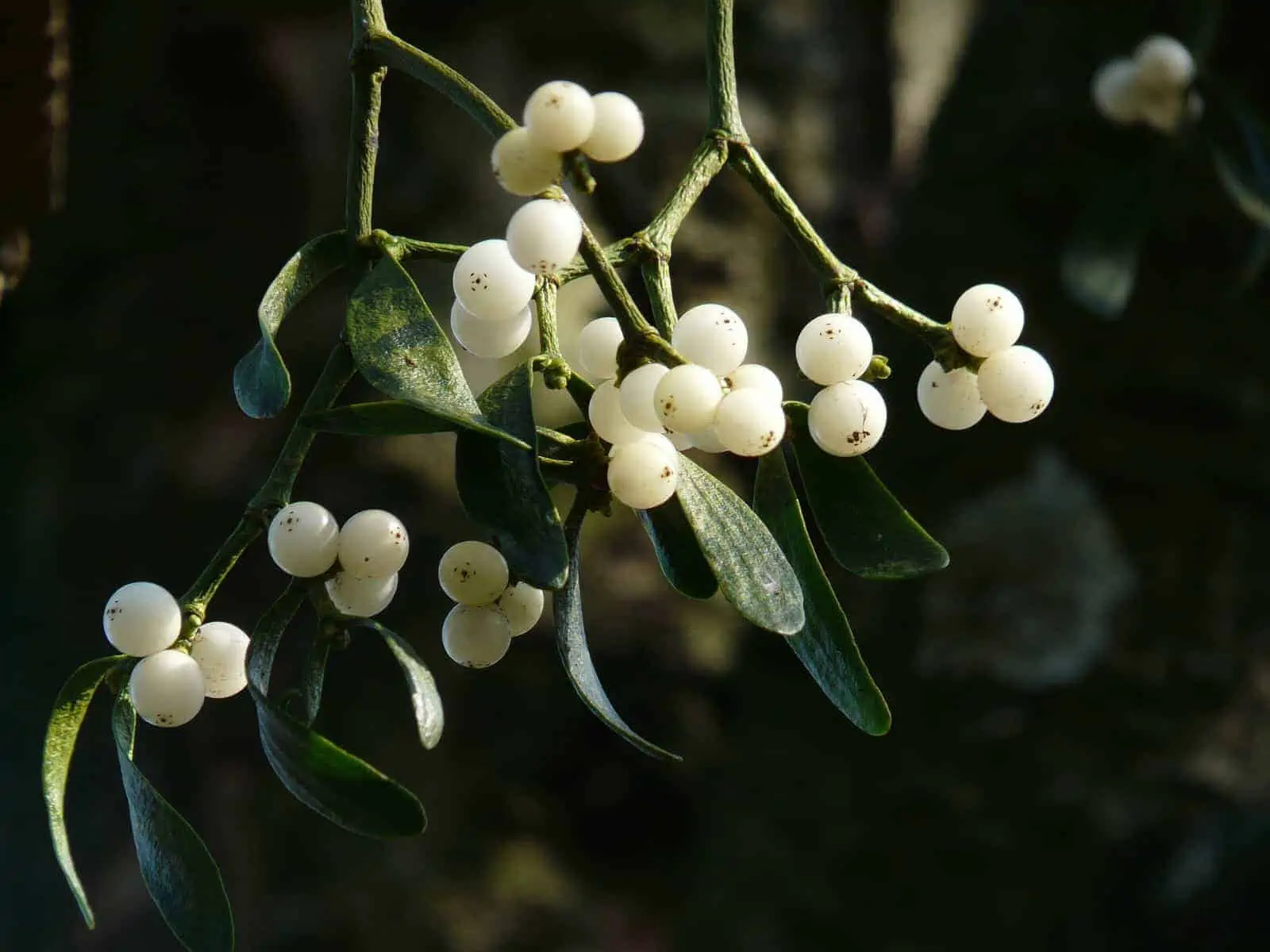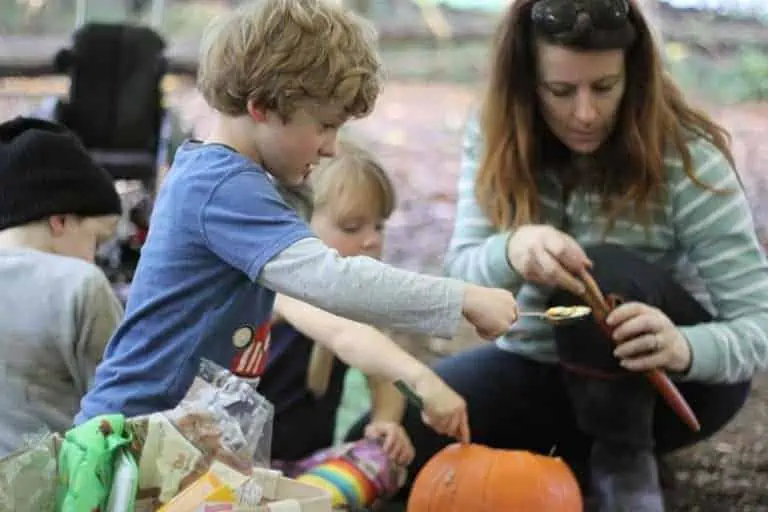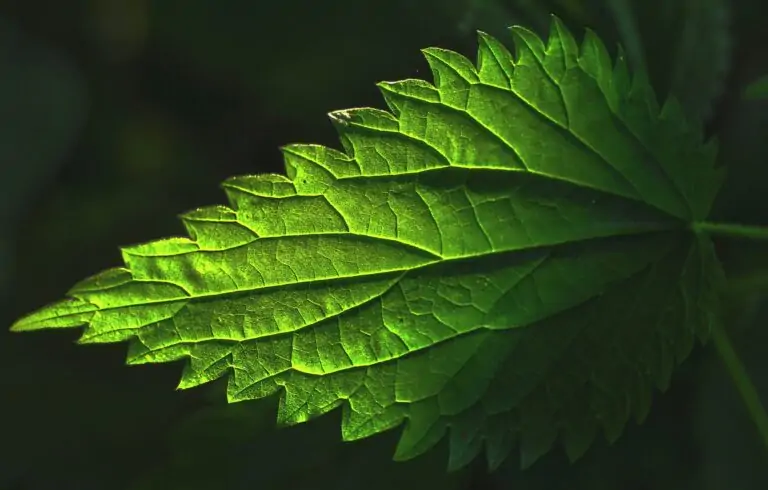Wild Garlic (Allium ursinum)
Wild garlic goes by many names – ramsoms, cowleek, buckrams and wide leaf garlic, just to name a few.
Native to Europe and Asia this bulbous perennial flowering plant can be found growing in damp woodland. Favouring the moist and shady conditions of the deciduous woodland this wild edible can be found bursting into life from early spring.
First the carpet of thick vibrant green leaves takes it place across the woodland floor, often growing in abundance creating a sea of intense green leaf cover. Then from April to May the heads of the white star shaped flowers take centre stage making a big impact on the woodland landscape.
A large patch of wild garlic isn’t just an impressive sight – but it’s a feast for the senses – literally. It smells just as good as it looks…and tastes even better!
As with any foraging, be sure of your plant ID, and make sure you forage respectfully and sustainably. But if you are lucky enough to have a large patch to forage from then you really want to make the most of this delicious plant.
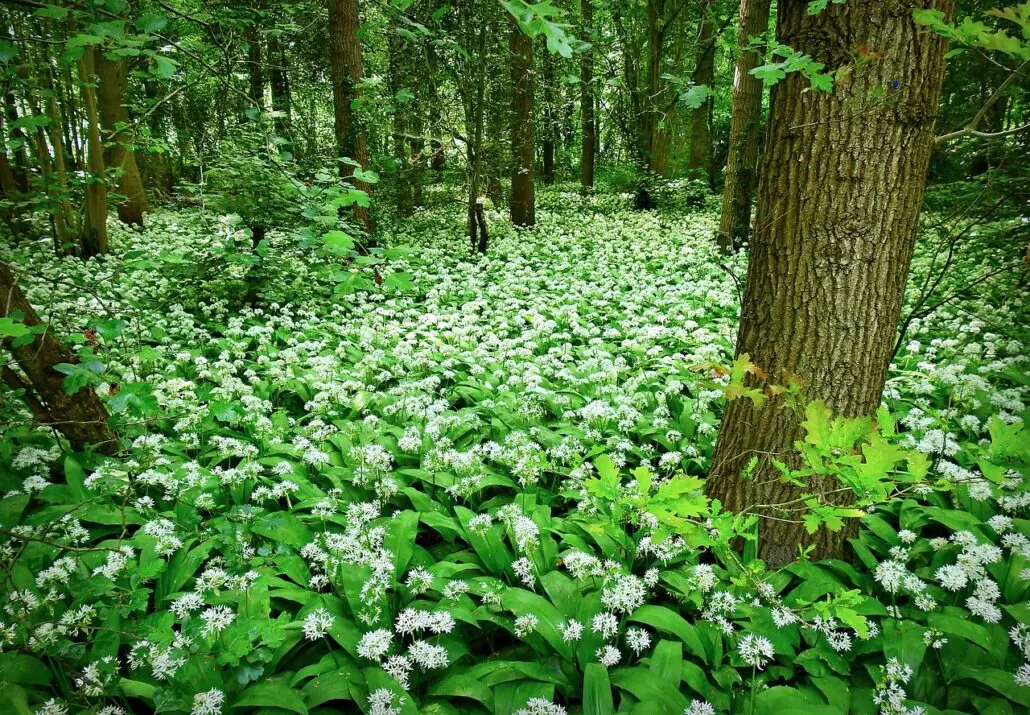
So here are some tasty ideas to get full use of this fantastic wild edible that is packed full of flavour –
Wild Garlic Soup
- Heat the oil and then add the shallots to soften
- Next add the stock and the potatoes, cooked until potatoes have softened
- Add in the seasoning and wild garlic leaves (nettles or spinach can be added at this point if you want to boost the amount of greens)
- Blend with a stick blender
- Bring to the boil until piping hot
- Pour into bowls and add a teaspoon of creme fraise and fresh garlic flowers for decoration
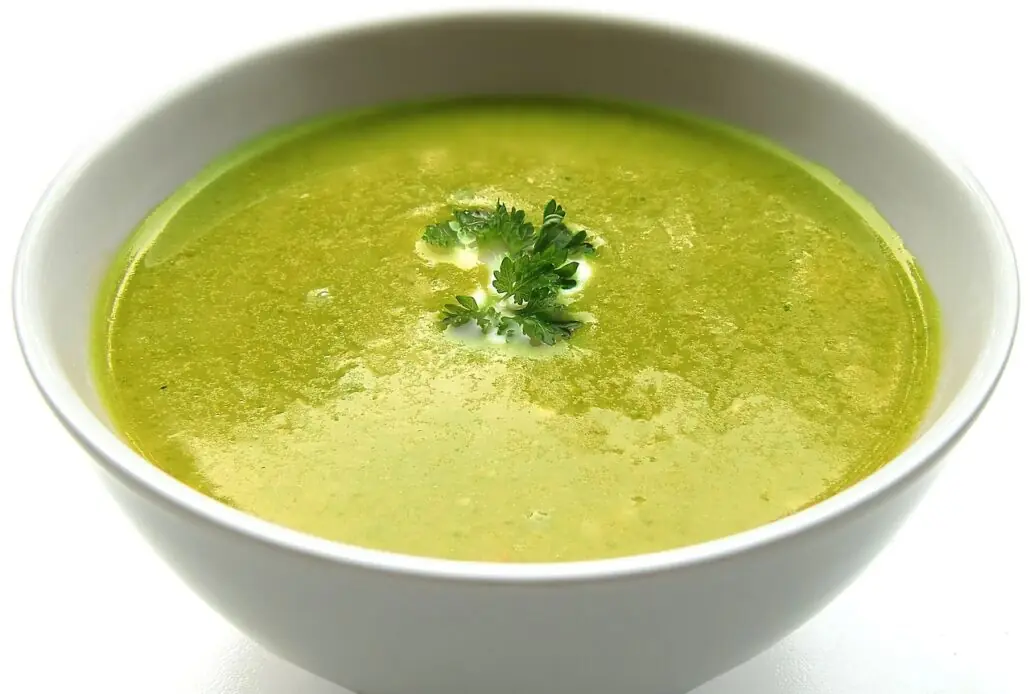
Wild Garlic Pesto
This is a robust recipe that can be adjusted to suit your desired taste and texture. As well as using wild garlic you can also add in a little basil too if you prefer the more traditional basil taste. With the wild garlic we found that the walnuts worked well, but you can also use the classic pine nuts or play around with flavours and try almonds and hazel nuts too.
- Add the wild garlic leaves, lemon juice, salt & pepper into a blender, lightly blitz.
- Next add in the walnuts and olive oil and pulse (some people like their pesto crunchy, and some prefer it smooth so adjust the amount that you blend this up according to your preference)
- Lastly, add the Parmesan and blend until the desired texture.
- Taste and add further seasoning if required.
Store in sterilised jars in the fridge. This pesto works well stirred through hot fresh pasta or drizzled over pizzas and homemade garlic bread.
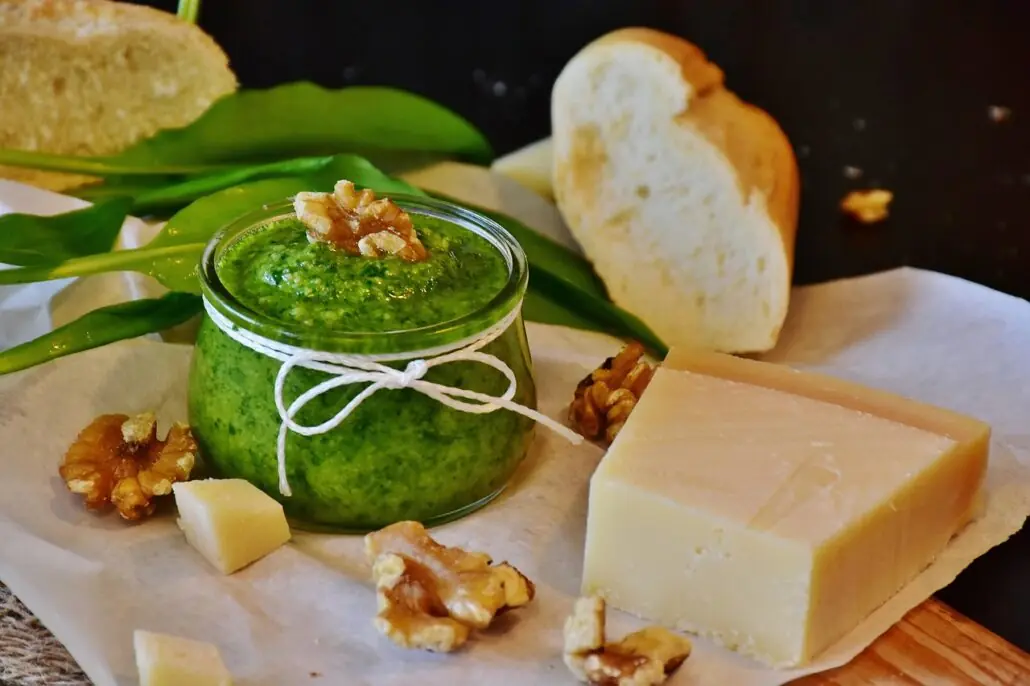
Wild Garlic Dressing
This is a chimichurri style dressing, it works well on cooked meat fresh from the fire, as a salad dressing or as a dipping sauce for fresh bread. Enjoy!
- Finely chop the wild garlic and fresh parsley
- In a bowl mix the lemon & lime juice with the wine vinegar, sugar and water – stir well until the sugar dissolves
- Add in the greens, the chilli and seasoning, stir well and taste, add more seasoning if required
Store in a sterile jar if you are not using straight away. This only lasts for a few days so it’s best to use this sooner rather than later.
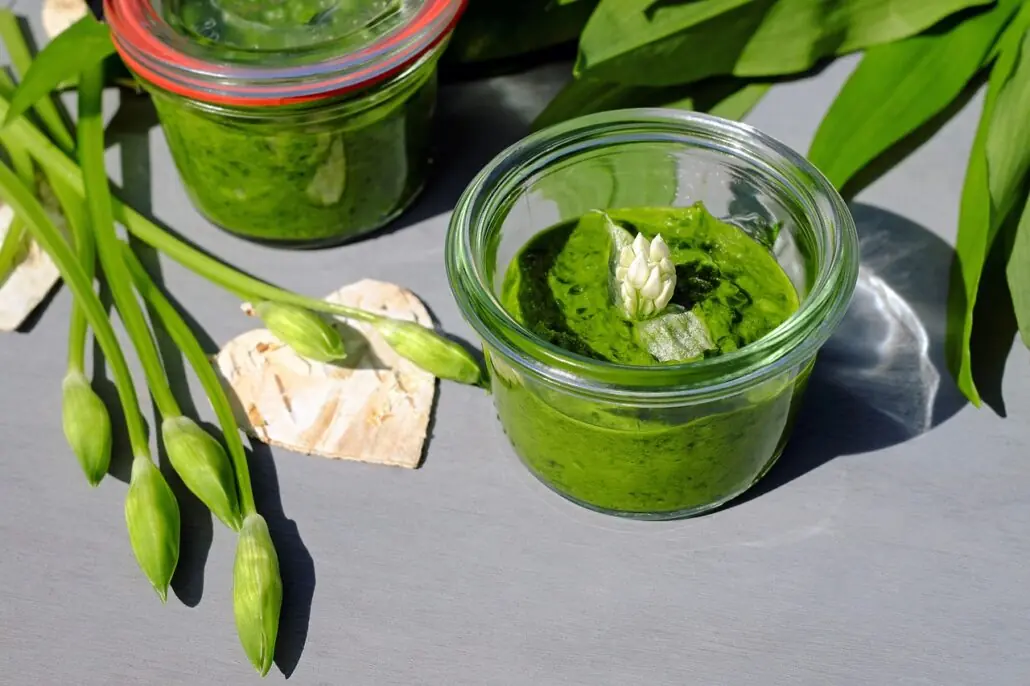
Wild Garlic & Cheese Scone
- Pre-heat the oven at 220c/gas mark 7 & line a baking tray.
- In a large bowl add the flour and baking powder, mix together then add in the butter.
- With cold hands (run them under the tap) rub the mixture into bread crumb consistency.
- Add the black pepper, chilli flakes (if being used), the cheddar and wild garlic leaves.
- Gently mix together.
- Pour in the milk and gently bring the mixture together using a fork – using a cold metal fork helps to stop the dough from becoming overworked.
- Handling lightly bring the dough together.
- Place on a floured dough gently roll out until approximately 3cm thick.
- Using a cutter, or the top of a glass, cut out the scones and place on the tray.
- Brush the top of each scone with a little milk.
- Bake for approximately 15 minutes or until golden brown.
Eat while warm with plenty of butter…these go well with the soup!
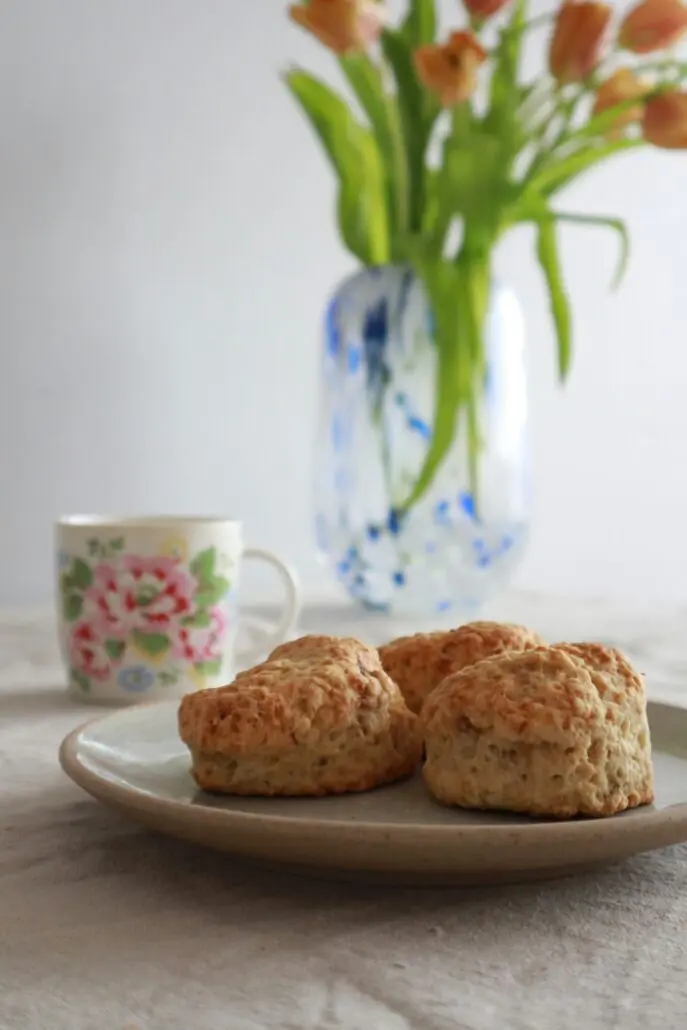
Wild Garlic Butter
If you have an abundance of wild garlic and are looking for ways to store it for later in the season then this is a great way to keep and use it. This butter can be used straight away, stored in the fridge or frozen to keep for longer.
Wild garlic butter is a versatile addition to many dishes as well as making awesome garlic bread! But my favourite way to use this is by adding a knob of this garlic butter onto a steak just as it’s taken off of the fire, so you get buttery garlicky oozy yumminess to take your steak to a whole new level!
- Add all of the ingredients to a bowl
- Using the back of a spoon, or your hands, combine all of the ingredients together – aim for an even distribution of greens through your butter block
- Shape into a block, wrap in baking paper and store in the fridge. Or to freeze, press into ice cube trays, then when needed you can just pop out a block or two from the frozen tray of garlic butter
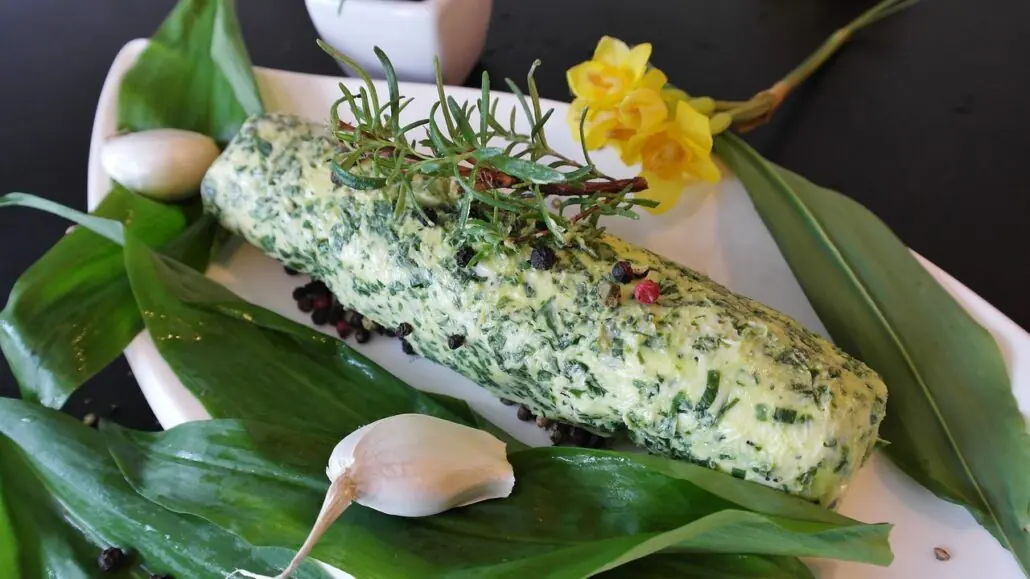
Freezing Wild Garlic
You can either wash and dry the leaves, the freeze them flat so they can just be crumbled up and added to dishes throughout the year.
Alternatively you can wash the leaves, add them to the blender and blitz them up into a thick garlic paste. Pour this bright green paste into ice cube trays and freeze. You can then grab a few cubes and add them into many different dishes throughout the year to enjoy the lovely wild garlic flavour all year round.
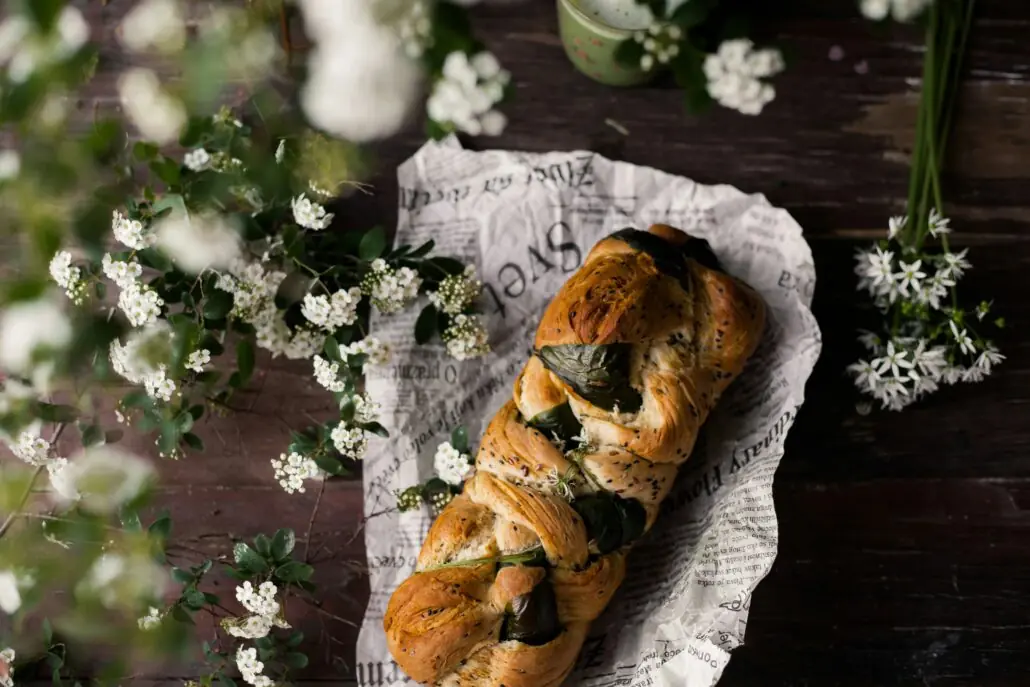
Remember to be 100% sure of your plant ID. Wild garlic is relatively easy to identify due to its distinctive smell when you crush the leaves, but there are a few plants with similar shaped leaves so if it looks like wild garlic it’s a good idea to do the sniff test too! If you crunch up the leaf and it smells garlicky then chances are it’s wild garlic, if you crunch them and they don’t smell then they are not wild garlic!
When foraging remember to forage sustainably. Be careful not to pull up the bulb as this will disrupt the bulb, damaging the plant and stopping its ability to keep growing. Also remember to only take what you need to avoid eating this fantastic plant.
Remember that wildlife need these plants too so don’t take a lot from a patch. When you have finished foraging you should be able to look back at where you’ve been and not see where you have been picking.
And the same goes for trampling too, when foraging large patches of wild garlic be careful where you tread. It’s sad to see when consideration hasn’t been made and plants get trampled and destroyed. Not only does this mean that there are less plants to forage, it’s also damaging for the environment and will impact the plant’s growth.
This lack of respect also gives foragers a bad name – so let’s work together and be respectful to the environment and to others when out foraging.
But enjoy your foraging trips and have fun trying new recipes and new ways to eat these tasty wild edibles.
